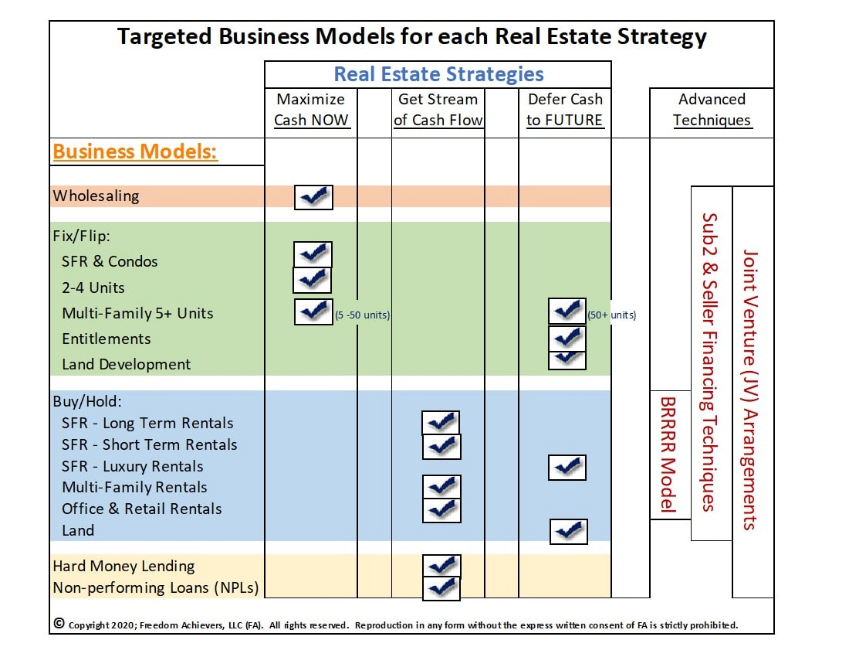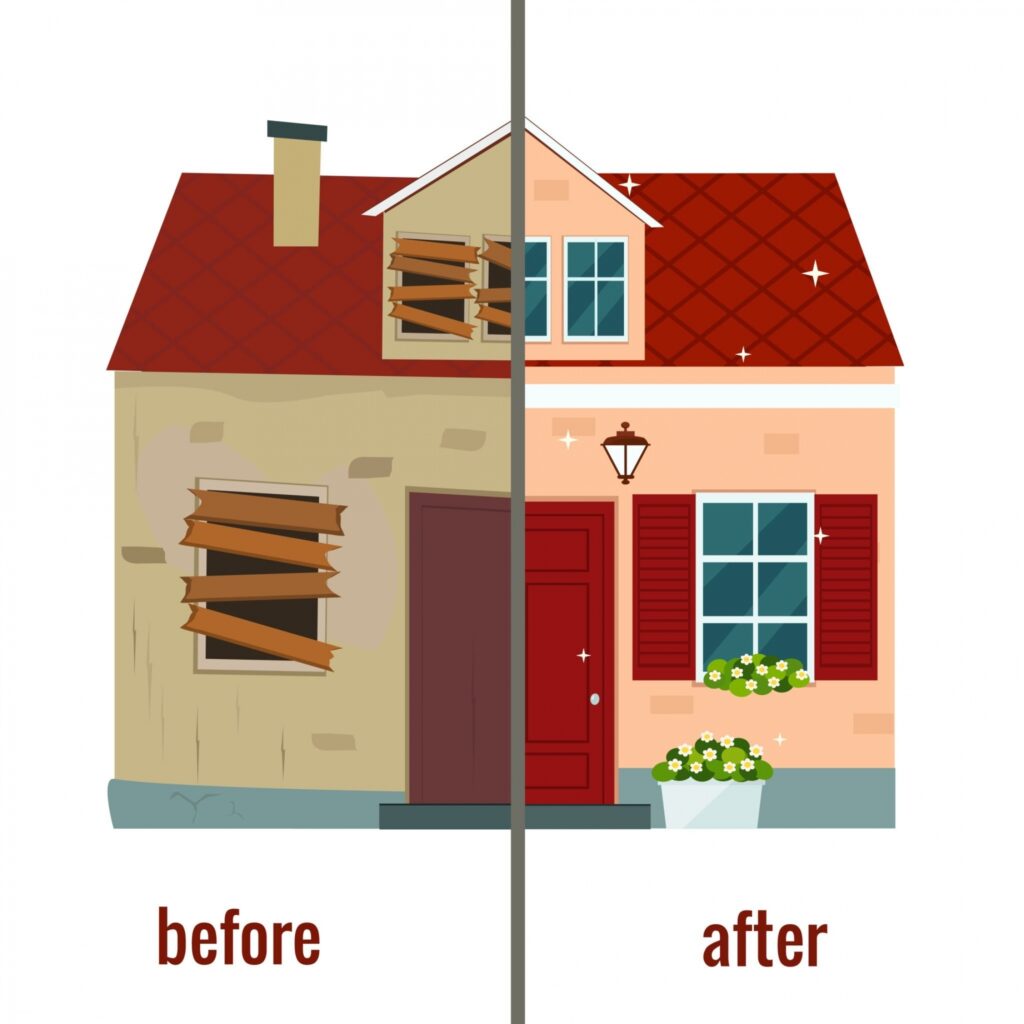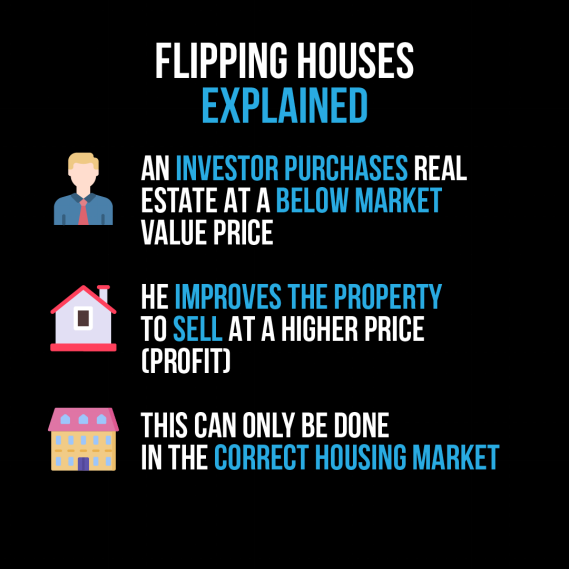უძრავი ქონების საინვესტიციო სტრატეგიები
ძირითადი სასწავლო მიზნები:
შესავალი: This section delves into the realm of real estate investment strategies, highlighting the pathways an investor can navigate to achieve their investment goals. Through a comprehensive examination of two prevalent strategies – “Buy and Hold” and “Fix and Flip” – the reader will be equipped with a foundational understanding of their intricacies, benefits, and challenges.
- Grasp the foundational principles of real estate investment strategies and their alignment with individual investment goals, risk appetites, and investment durations.
- Dive deep into the “Buy and Hold” strategy, recognizing its emphasis on long-term appreciation and steady passive income generation, alongside its inherent challenges.
- Decode the “Fix and Flip” strategy, understanding its focus on short-term profits through property renovation and its potential pitfalls.
- Discern the strategies for sourcing undervalued properties, facilitating smarter purchases that can lead to optimized returns.
Real estate investment strategies are approaches that investors use to achieve their investment goals. These strategies can vary based on the investor’s goals, risk tolerance, and investment horizon. This section will discuss two common strategies: buy and hold, and fix and flip.

Figure title: Real Estate Investment: Strategic Breakdown
წყარო: True Freedom Achievers
აღწერა: This infographic provides a detailed analysis of various real estate investment strategies, highlighting the benefits and considerations of each approach to help investors align their choices with their financial goals.
ძირითადი დასკვნები:
- Diverse Strategies: From buy-and-hold to flipping, the infographic showcases a spectrum of real estate investment strategies, each with unique risk and return profiles.
- Goal Alignment: It emphasizes the importance of matching investment choices with personal financial objectives, time horizons, and risk tolerance.
- Informed Decisions: The visual breakdown aids investors in understanding the nuances of each strategy, facilitating more informed investment decisions.
აპლიკაცია: Investors can use this strategic breakdown to identify which real estate investment approach best suits their individual needs, potentially maximizing returns while managing risks according to their investment plan.
A. Buy and Hold Strategy

Figure title: A New Beginning: Passing the Keys
წყარო: iStock:
The buy and hold strategy is a long-term investment approach that involves purchasing a property and holding onto it for an extended period of time, typically 5-10 years or more. The goal of this strategy is to generate long-term appreciation and cash flow through rental income.
დადებითი მხარეები:
- Long-term appreciation: The property’s value can increase over time due to economic growth, improvements in infrastructure, and changes in local market conditions.
- Passive income: Rental payments provide a consistent source of passive income, which can help build wealth over time.
უარყოფითი მხარეები:
- Vacancy risk: A property may not be rented out for an extended period, resulting in lost rental income and additional expenses.
- Market fluctuations: Changes in interest rates, local economy, and demographic trends can affect property values and demand for rental properties.
Best Practices/Advice: Conduct due diligence and property inspections, as well as have a solid understanding of the local real estate market and economic conditions, before implementing this strategy.
B. Fix and Flip Strategy

Figure title: Fix and Flip Transformation: Before and After
წყარო: iStock:
The fix and flip strategy is a real estate investment approach that involves purchasing a property in need of repairs, renovating it, and then selling it for a profit. The goal of this strategy is to generate short-term profits and quick returns by buying low and selling high.
დადებითი მხარეები:
a. Short-term profits: Investors can generate a profit in a relatively short amount of time by purchasing an undervalued property, renovating it, and then selling it for a higher price.
b. Quick returns: This strategy allows investors to see a return on investment quickly and move on to their next project.
უარყოფითი მხარეები:
a. Renovation costs: Higher-than-anticipated renovation costs can eat into potential profits.
b. Market trends: Demand for renovated properties and potential selling prices can be affected by local market trends.
Strategies for Finding Undervalued Properties:
- Foreclosures and Auctions: Foreclosure properties and properties sold at auction can often be purchased at a discount, as the owners are motivated to sell quickly.
- Distressed Properties: Properties in need of repairs or renovations can often be purchased at a lower price than similar properties in better condition.
- Off-Market Properties: Properties not actively listed for sale can sometimes be purchased at a lower price, as there may be less competition among buyers.
Best Practices/Advice: Conduct due diligence, accurately estimate renovation costs, and have a solid understanding of the local real estate market and economic conditions before implementing this strategy.

ფიგურა: This infographic succinctly explains the concept of “Flipping Houses.” It describes the process where an investor purchases real estate at a below-market value price, makes improvements to the property, and then sells it at a higher price to realize a profit. The infographic emphasizes that this strategy is only effective in the correct housing market conditions. This information is particularly useful for individuals interested in real estate investment, providing a clear and concise overview of how house flipping works and the market factors that influence its success.
In conclusion, both buy and hold and fix and flip strategies have their pros and cons. Investors should carefully consider their goals, risk tolerance, and investment horizon before choosing an investment strategy. It’s also crucial to research the local real estate market, economic conditions, and potential risks associated with each strategy to make informed decisions and optimize returns.
ძირითადი დასკვნები:
დასკვნითი განცხადება: Real estate investment strategies are as varied as the investors who employ them. This section has shed light on two paramount strategies, “Buy and Hold” and “Fix and Flip”, each boasting its unique advantages and setbacks. By weighing the benefits against the risks and aligning strategies with individual goals and market conditions, investors can pave their way to real estate success.
- The “Buy and Hold” strategy, with its focus on long-term appreciation and passive income, can be a goldmine for patient investors willing to weather market fluctuations and vacancy risks.
- On the other hand, the “Fix and Flip” strategy, rooted in the principle of adding value through renovations, can be lucrative for those willing to tackle renovation challenges and are attuned to market trends.
- Identifying undervalued properties is a cornerstone skill, and avenues like foreclosures, distressed properties, and off-market properties can be potential goldmines for discerning investors.
- Regardless of the chosen strategy, due diligence, market research, and continual learning remain the pillars of success in the realm of real estate investments.

